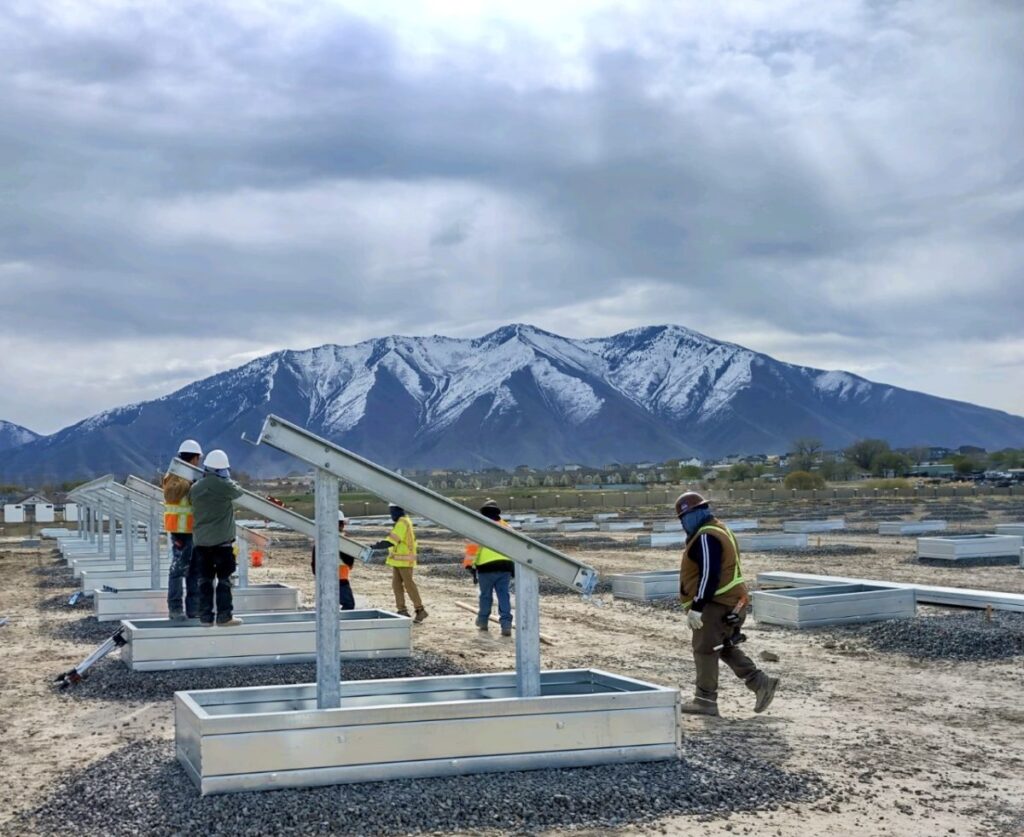Solar at a Utah landfill joins a growing number of projects on brownfield sites

Landfills are increasingly playing host to solar facilities, with the EPA reporting an 80% rise in such projects across the U.S. over the last five years. A 4.7 MW Utah project is one of the latest additions.

A 4.7 MW community solar project enters service this summer on a landfill in Spanish Fork, Utah, just south of Provo. The project was designed and installed by Prometheus Power, and Solar FlexRack provided the mounting system. The 27-acre project is expected to provide enough power for 3,000 homes, said Solar FlexRack.
Landfills are increasingly playing host to solar facilities, with the U.S. Environmental Protection Agency (EPA) reporting an 80% rise in such projects across the U.S. over the last five years.
While the projects work well to make use of otherwise compromised land, installing on a landfill comes with its own set of challenges. One big hurdle is that installers typically cannot penetrate the landfill’s surface, which means that mounting hardware and foundational structures must be adaptable and lighter.
Solar FlexRack said it used its Series B Cast-in-place (CIP) mounting technology, which offered customizable blocks and a two-support system that reduced block thickness. The mounting system’s lighter ballasts and array profile flexibility can translate to lower project costs, said FlexRack. The mounting system benefits from internal bracing and fewer components, making it faster and easier to install.
Solar on landfills
The EPA tracks solar landfill-topping installations as part of its RE-Powering America’s Land initiative. Nearly 60% of all the projects tracked by the initiative sit on landfills, and more than 90% of those are solar PV. Massachusetts leads the field with 30% of the country’s landfill projects installed there.

As of October 2020, the EPA had identified 417 renewable energy installations on 390 contaminated lands, landfills, and mine sites, with a cumulative installed capacity of 1.85 GW. Nearly 70% of those projects were systems of 1 MW or more.
One of the largest is near Houston, where the 50 MW Sunnyside solar facility is planned for a 240-acre landfill. It is expected to reach operation by the end of 2022.

And earlier in 2021, Source Renewables, a New York clean energy developer, said it planned to use a landfill in South Buffalo as the host site for two community solar arrays totaling 10 MW. According to the company, the project would consist of two 5 MW solar arrays expected to produce enough electricity to power more than 2,500 households per year.
EPA said that a favorable policy climate is important when it comes to supporting RE-Powering sites. It said that Massachusetts’ SMART Program offers enhanced incentives for landfill and brownfield development, and a fast-track project approval process. New Jersey and Illinois have also made strides in policy and utility involvement, said the EPA.
A majority of the sites tracked by EPA are either municipally or privately owned, with around 1.5 GW of the 1.8 GW installed capacity falling under that ownership structure. Two-thirds of the projects sell power back to the grid, and 22% are community solar projects like the one in Spanish Fork.
From: https://pv-magazine-usa.com/2021/07/12/solar-at-a-utah-landfill-joins-a-growing-number-of-projects-on-brownfield-sites/

